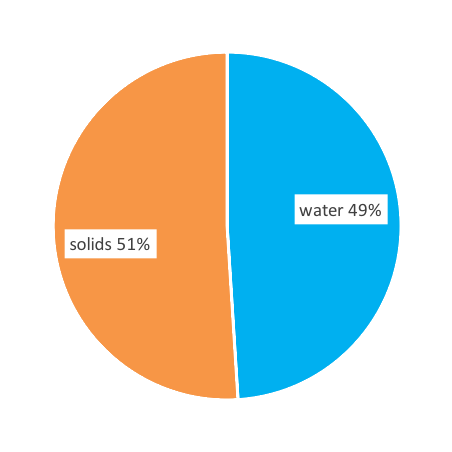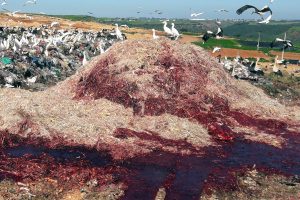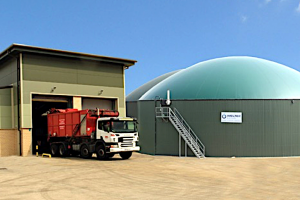the domain of generizon. organic waste.
waste or biomass. if it’s organic, liquid, wet, or semi-dry matter, that’s our domain. microbial degradation. fermentation by bacteria.
- aggregated food beverages industry waste. oil mills. dairies. cheese factories. transformation. meat. fish. fruits. vegetables. canning industry.
- agricultural waste. animal rearing. manure. slurry. cattle. poultry. etc. crop waste. cereals. horticulture. aquaculture.
- organic fraction municipal solid waste. 70% in Morocco. highly humid.
- sludge from wastewater treatment plants wwtp.
- paper pulp sludge.
organic waste in Morocco.
In Morocco, there are around 60 million tonnes of organic waste every year, with various dry matter contents. These come from three sources: agriculture, agro-industry, and households.

municipal solid waste MSW in Morocco. which goes to the landfill. composition 70% 70%.
70% of Morocco’s household waste is organic, 70% of which is water, which hence is 50% of the total and creates the problem known as leachate.
15 to 25% of this waste is recyclables, including 6-10% of paper and cardboard, 6-10% of plastic, 1-4% of metal and 1-4% of glass. Much of the recyclable material does not reach the landfill, but is recovered by the informal sector, thereby increasing the rate of organic matter and humidity that goes into landfilling.



the problem. it’s the organic.
As part of the program that puts in place the centres d’enfouissement et valorisation CEV, (recycle and recovery/utilization centers) and controlled landfills, in the past ten years, some heavy investments have been made in mechanical sorting centers, which today recover 3-5% recyclables, sometimes less. Nothing has been done to treat the 70% of the organic portion.
The organic is landfilled without stabilization.
There is no doubt that we must reduce the amount of plastic, paper, metal, and glass arriving at landfills and encourage their recycling and reuse. However, these are not the major cause of health and environmental impacts at landfills. In fact, burying plastic instead of incinerating it is effective carbon sequestration.

But in Morocco, it is mainly the wet, organic, and biodegradable waste that is landfilled:
- organic household waste,
- expired fruits and vegetables from markets,
- red meat and poultry slaughterhouse waste,
- restaurant/hotel waste, food, and kitchen scraps,
- or fish and other food processing waste.
Organic matter is the major cause of the nuisances;
- they are responsible for health and environmental impacts,
- pollute the atmosphere with their greenhouse gas emissions (especially methane),
- harm soil and groundwater,
- in particular, they produce leachate, the treatment of which is costly and complicated. leachate basins take all places.
- moreover leachate and organic waste emit foul smells.
Landfilling of biodegradable organic waste was banned in several European countries such as Germany, Sweden, and Belgium in the early 2000s. With the introduction of the directive (1999/31/EC) on the landfilling of waste, Europe set targets for its member countries by 2020, with the aim of gradually reducing the amount of organic matter in landfills and thus reducing their greenhouse gas emissions.
methane potential of household waste in Morocco. today 99% of the gas is lost.

During their degradation, either in the digester or in the landfill, organic waste produces biogas (methane), all the time, without stopping until complete mineralization.
This anaerobic process takes place
- faster and more efficient in a digester in one to two months,
- over several years inside the landfill.
Today, no digester exists in Morocco for organic household waste, all biogas is produced and emitted from the large landfills in the urban areas of the Kingdom, from almost 7 Mt of waste per year.
The biogas (methane and CO2, GHG) emissions amount to between 400 M m3 and 700 M m3 / year. Very little, less than 5 – 10%, is captured today by degassing systems, and only 1% is utilized in two gas engines in Fez and Oujda (2018).
You could say that today 99% of the gas is lost, and goes into the sky, so the energy potential is lost. According to our low calculations, this amounts to at least 70 MW of electric power with a potential 24/7 annual electricity production of 630 GWh covering the needs of 170,000 Moroccan households.
Higher and more favorable estimates in biogas production indicate a staggering 1.5 TWh / year in electricity production lost, the yearly consumption of 400,000 Moroccan households.
wasted energy. means huge GHG emissions.
To date and with a few exceptions (Fez, Oujda, and Rabat), most of the methane from landfills is released/lost to the atmosphere.
Landfills in Morocco release greenhouse gas emissions of at least 3 million tonnes of CO2 equivalent each year, some estimates point to a lot more.
Morocco in its NDCs is committed to reducing its greenhouse gas emissions by 42% by 2030. Some waste management solutions offer excellent opportunities to achieve this objective, but it is important to put in place the conditions to create this market and encourage these solutions. We must therefore:
- seriously engage in landfill degassing technology, with a remuneration system by volume of gas captured, flared, and maybe/better utilized in electricity production.
- redirect organic waste to anaerobic digestion facilities, encouraging 100% sustainable waste2energy solutions, like the one proposed by generizon.
other waste. in general. source and clarification.
- industrial. waste from economic activities. the Moroccan waste catalog establishes the list of hazardous waste.
- mines. excavation. large volume. excavation and process. chemical. metallic minerals. non-metallic. mine waste.
- hazardous industrial waste. dangerous. toxic. chemicals. nuclear.
- ordinary industrial waste. very different waste streams depending on the sector.
- papers (yes). metallurgy. plastics. automobiles. wood. glasses. organic waste from the food industry, a sector of economic activity, is part of our activities.
- food and beverages industry waste. much organic aggregated. transformation. meat. fish. oil. milk. flees. vegetable. at the heart of our activities.
- other non-organic packaging waste.
- inert industrial waste.
- construction waste. construction and public works. rubble. iron. wood. ceramic. asphalt. earth. sand.
- agricultural waste. (organic. of crops. fruits. of breeding. manure. liquid manure. liquids. wet. semi-dry. dry.). fish. slaughterhouses. at the heart of our activities.
- household municipal solid waste. mixed. MSW. recyclable. organic. at the heart of our activities. wet. mixed. contaminated.
- household waste and assimilated. includes assimilated waste from economic activities. businesses. hotel. restaurants. the heart of our activities. offices.
- waste of electrical and electronic equipment. WEEE. E-waste. computer. phone. at the end of life. high ecological footprint. metal recovery. recycling. valuation. often end up with assimilated MSW. huge problem.
- medical waste. hospitals. biosecurity. different degree of hazardousness. specific regulations.


